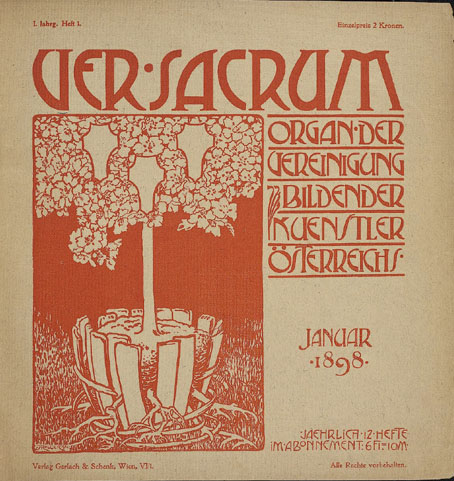
There are art magazines, and then there’s Ver Sacrum. I’m tempted to say there are magazines, and then there’s Ver Sacrum but that’s going a little far. Suffice to say that among the many fine art magazines of the period 1890 to 1910, a number of which have been featured here already, Ver Sacrum stands apart for its design and the consistent quality of its contents. Having seen back numbers of Jugend and Pan made available at the University of Heidelberg I’d been hoping the archivists there would eventually turn their attention to the art journal of the Viennese Secession, and they finally have, with the first bound number digitised here.
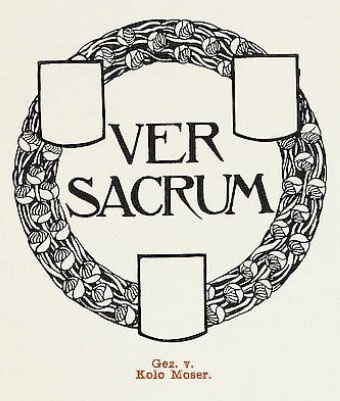
The volume for 1898 collects the first year of the journal cum manifesto of the Union of Austrian Artists, as the Secession group called themselves. That union is represented by the triple shield symbol which recurs in different forms across all the media produced by the group, the shields representing painting, sculpture and architecture. (On the cover of the first issue, the shields are shown growing from a tree whose roots have burst the confines of their container.) Ver Sacrum was a team effort with design contributions by Koloman Moser, Alfred Roller, Josef Hoffmann and Gustav Klimt, and what really sets it apart for me is its striking square format and the wide margins which provided a very flexible template for presenting a variety of graphic content. Other magazines of the period such as Pan shared some of the content but their presentation didn’t greatly differ from the more staid magazines of the era. Ver Sacrum was a break with the style of 19th century journals, and its graphic design points the way to much of the magazine and book design which would follow. It’s also a superb showcase for the Austrian development of the Art Nouveau style, and the overlap between Art Nouveau and the final flourishes of the Symbolist movement.
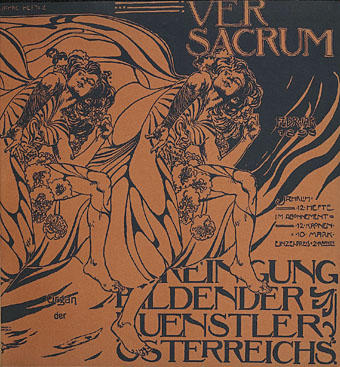
There’s far too much in this first volume to easily select, all I can do is advise that anyone interested has a browse through the entire book. As with Deutsche Kunst und Dekoration some of the art is the typically conservative fare of the period but the presentation makes up for that, and there’s enough of interest elsewhere to prevent things from getting dull. Here’s hoping the other volumes are made available very soon.
Update: Paul in the comments draws my attention to additional scans of Ver Sacrum at the Österreichische Nationalbibliothek. Heidelberg does a better job of making the issues browsable but it’s still great to have more than one source for this material.
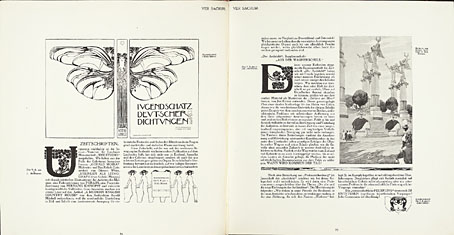
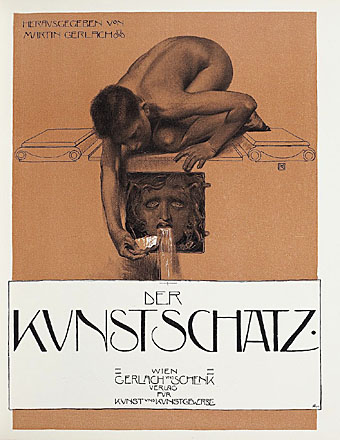
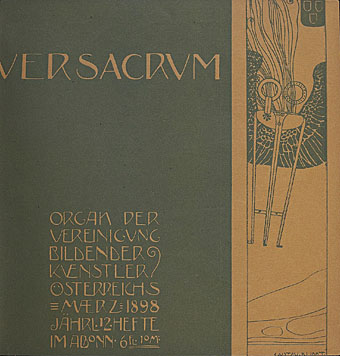
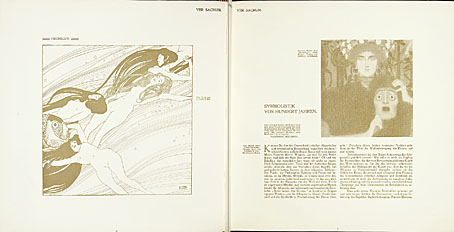
A spread from a feature on Gustav Klimt.
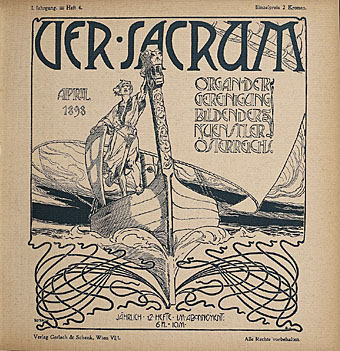
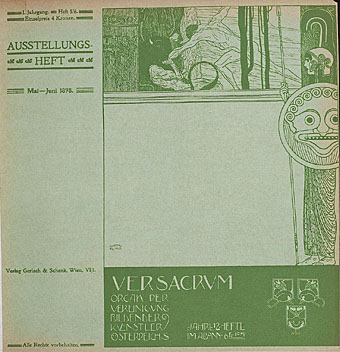
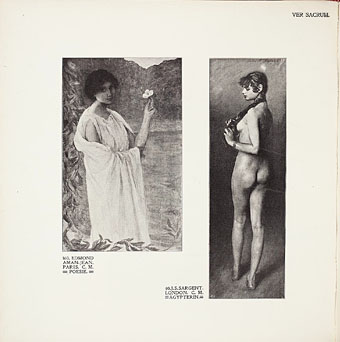
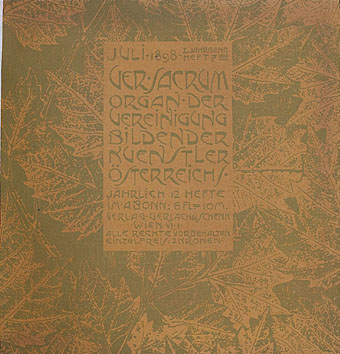
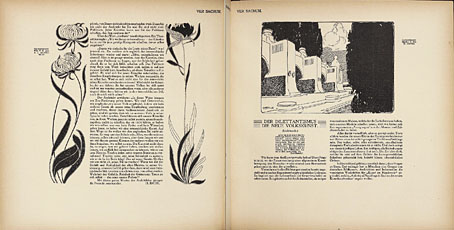
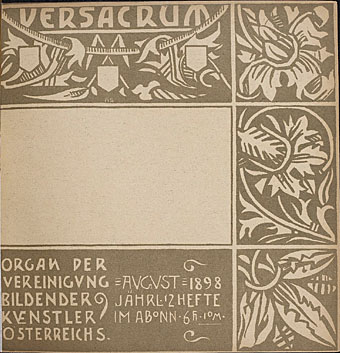
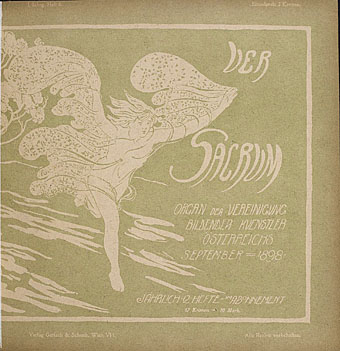
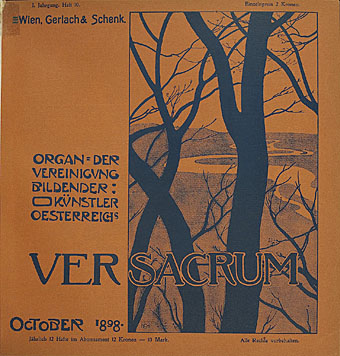
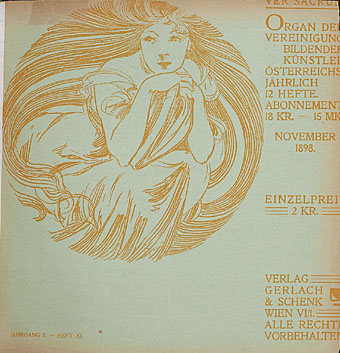
A cover illustration by Alphonse Mucha.
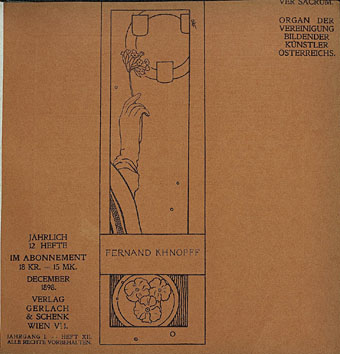
Above and below: an issue devoted to the Belgian Symbolist Fernand Khnopff.
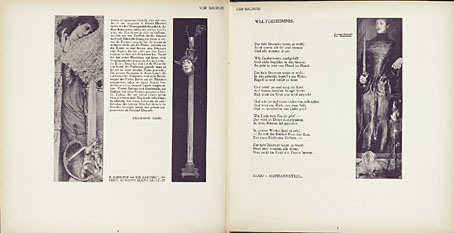
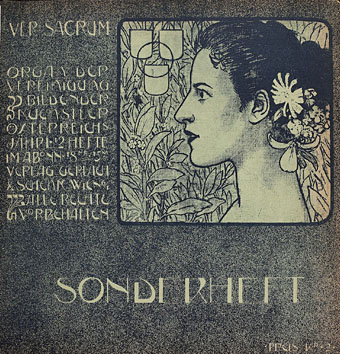
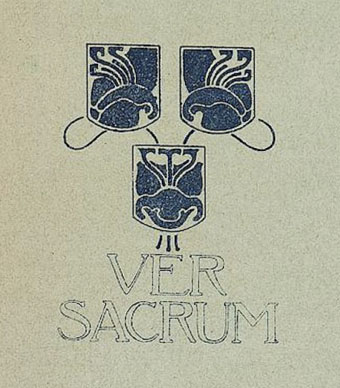
Previously on { feuilleton }
• Deutsche Kunst und Dekoration #10: Turin and Vienna
• Diaghilev’s World of Art
• The Savoy magazine
• Deutsche Kunst und Dekoration
• Keim & Czeschka’s Nibelungen
• Jugend Magazine revisited
• Secession posters
• Art Nouveau illustration

The Österreichische Nationalbibliothek has scans of additional Ver Sacrum issues.
http://anno.onb.ac.at/cgi-content/anno-plus?apm=0&aid=vsa
Thank you again for such a wonderful journal.
Hi Paul, and thanks for the tip! I’d tried searching elsewhere but with “Ver Sacrum” being a phrase with other uses, and not being very adept at reading German, I didn’t have much success.
Amazing magazine John! As was “Pan”, “The Studio”, “Mir Isskustva” et cetera. Thanks for this great intro! There was also ephemrical Polish art magazine calle “Chimera” published by Miriam (Zenon Przesmycki) with works of Polish Symbolists! Best, Egon
Thanks Egon. I know about Chimera and was intending on making a post about it at some point. A shame that what I’ve seen is mostly text, it would have been good to find another heavily-illustrated magazine.
Just moved to Vienna, and in the early steps of learning German myself. Heidelberg does seem much more comprehensive. Thank you again for such wonderful ephemera.
Does anyone know what the publishing run on 1898 Ver Sacrum was? How many printed, estimates on how many copies have survived? Thank you
Hi Thomas. I’m afraid I don’t know enough about the history to help with that. You’d probably need to find a book about the Secession or about the magazine itself, information on the web isn’t very detailed.